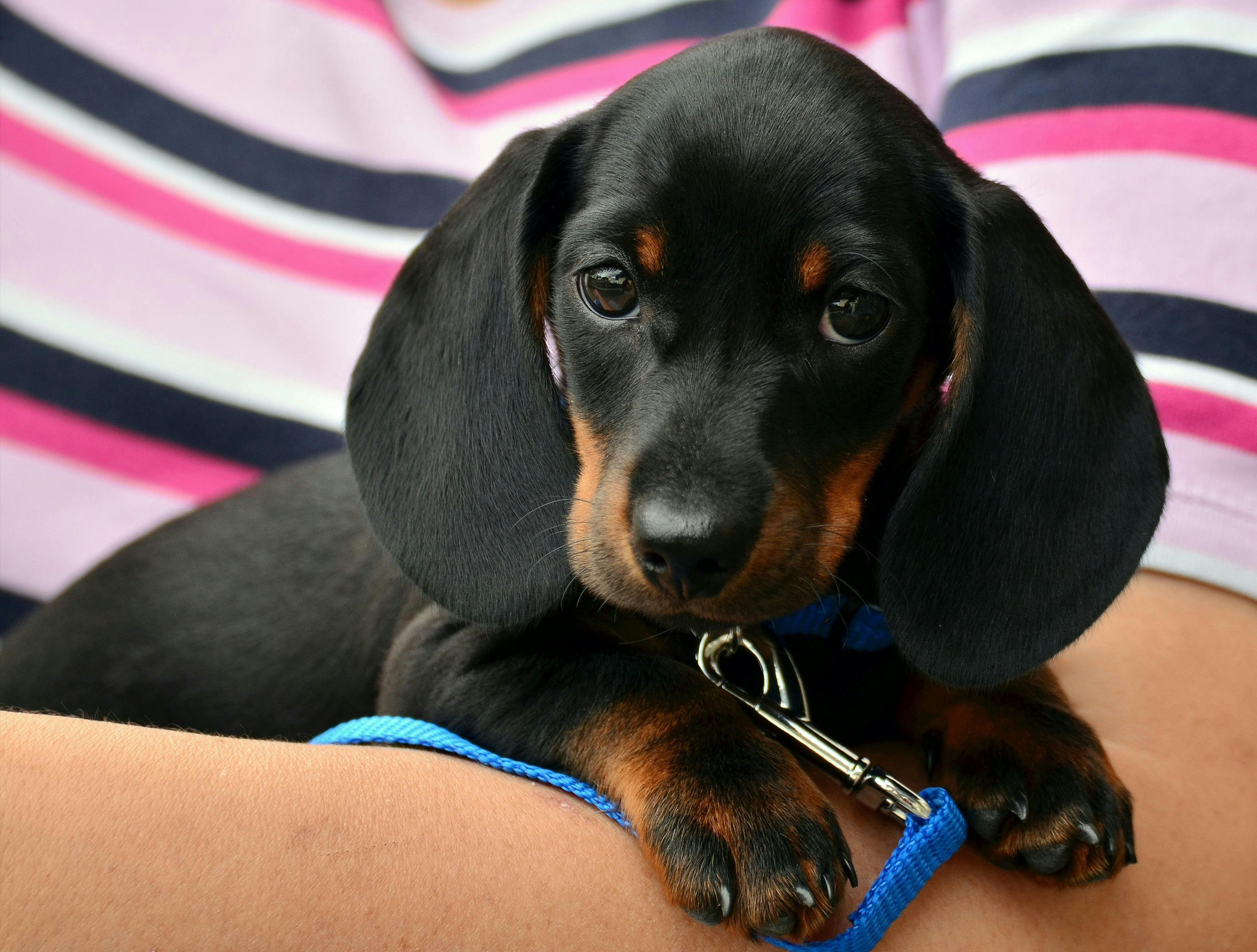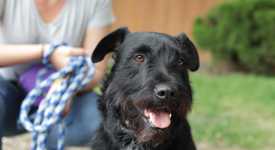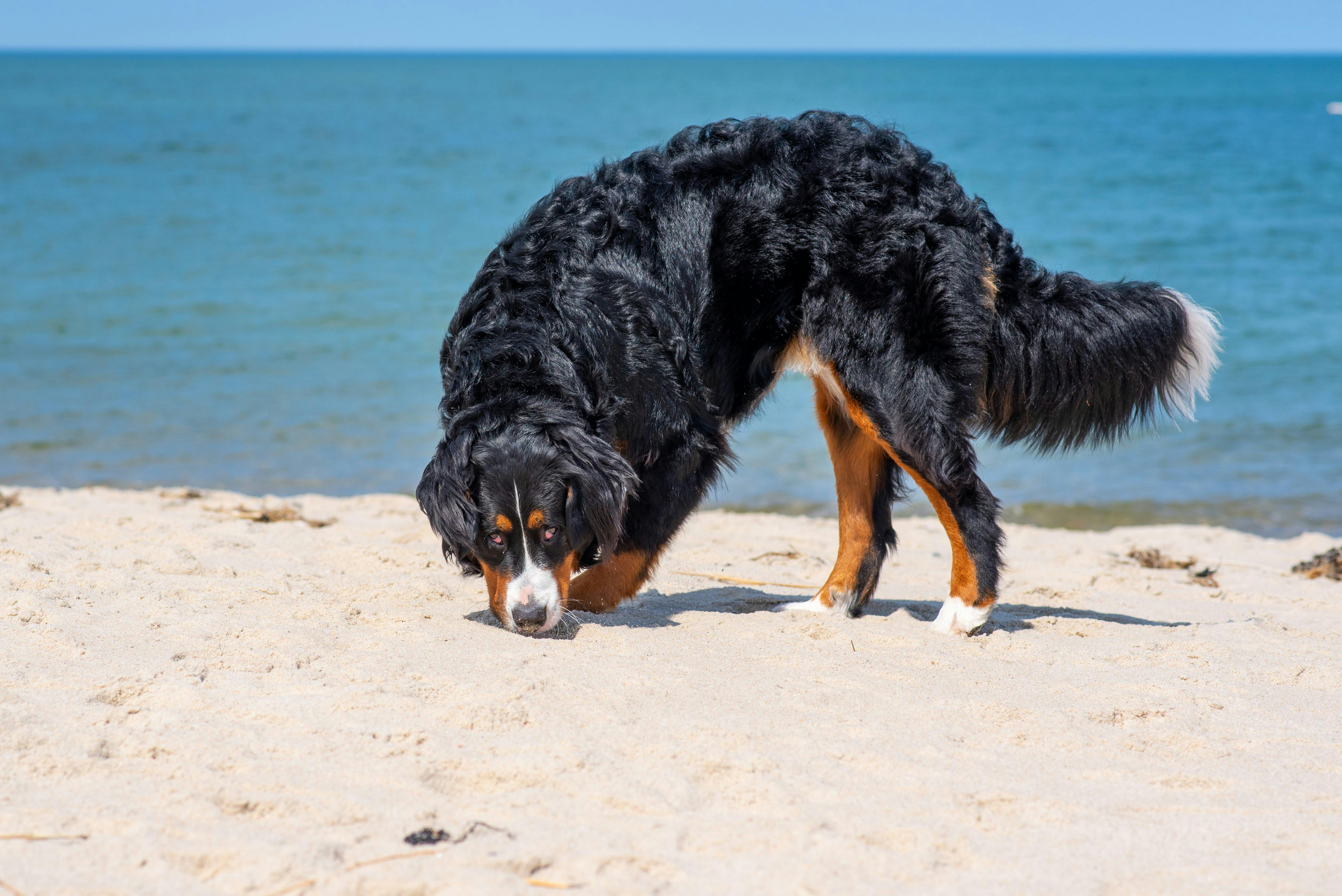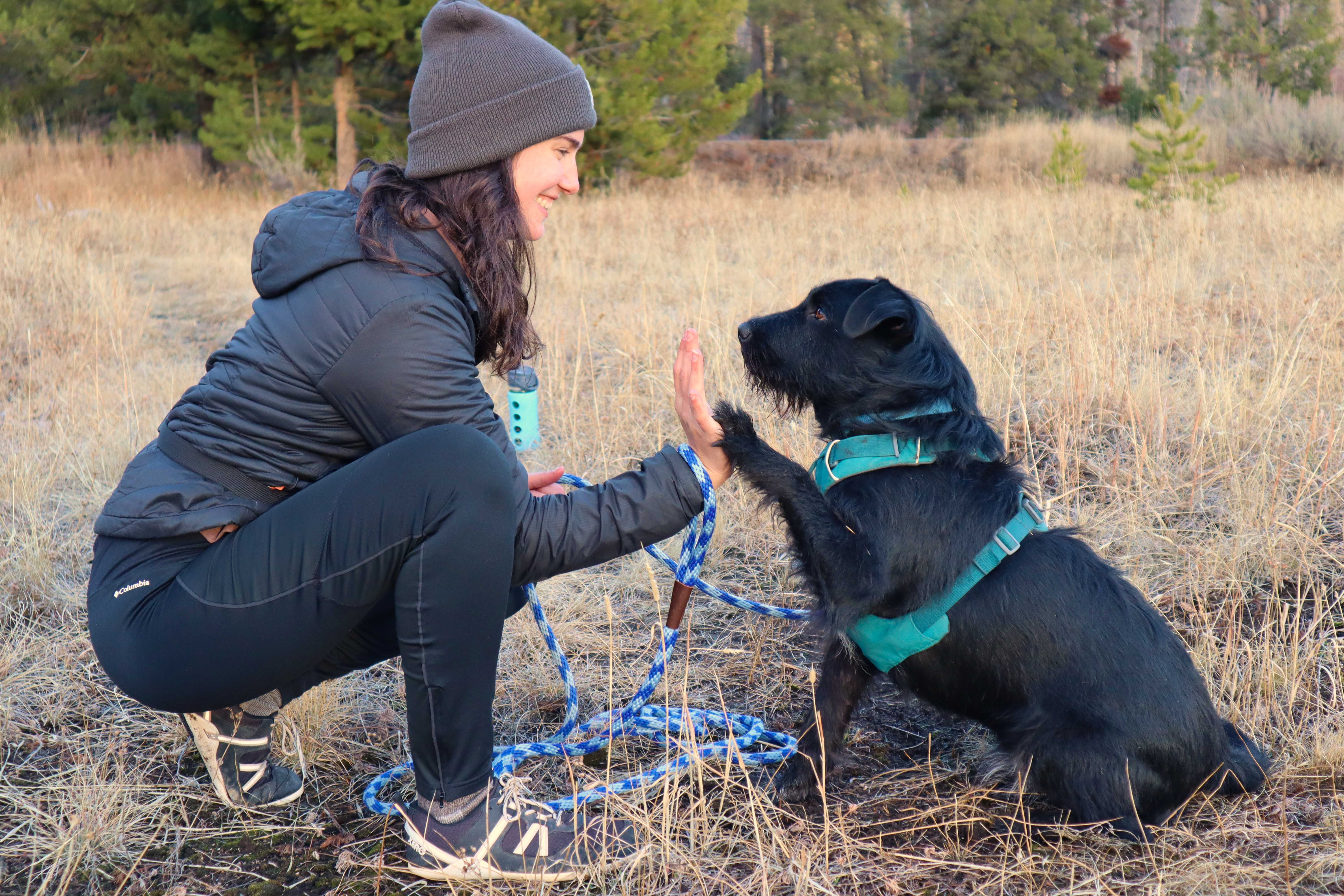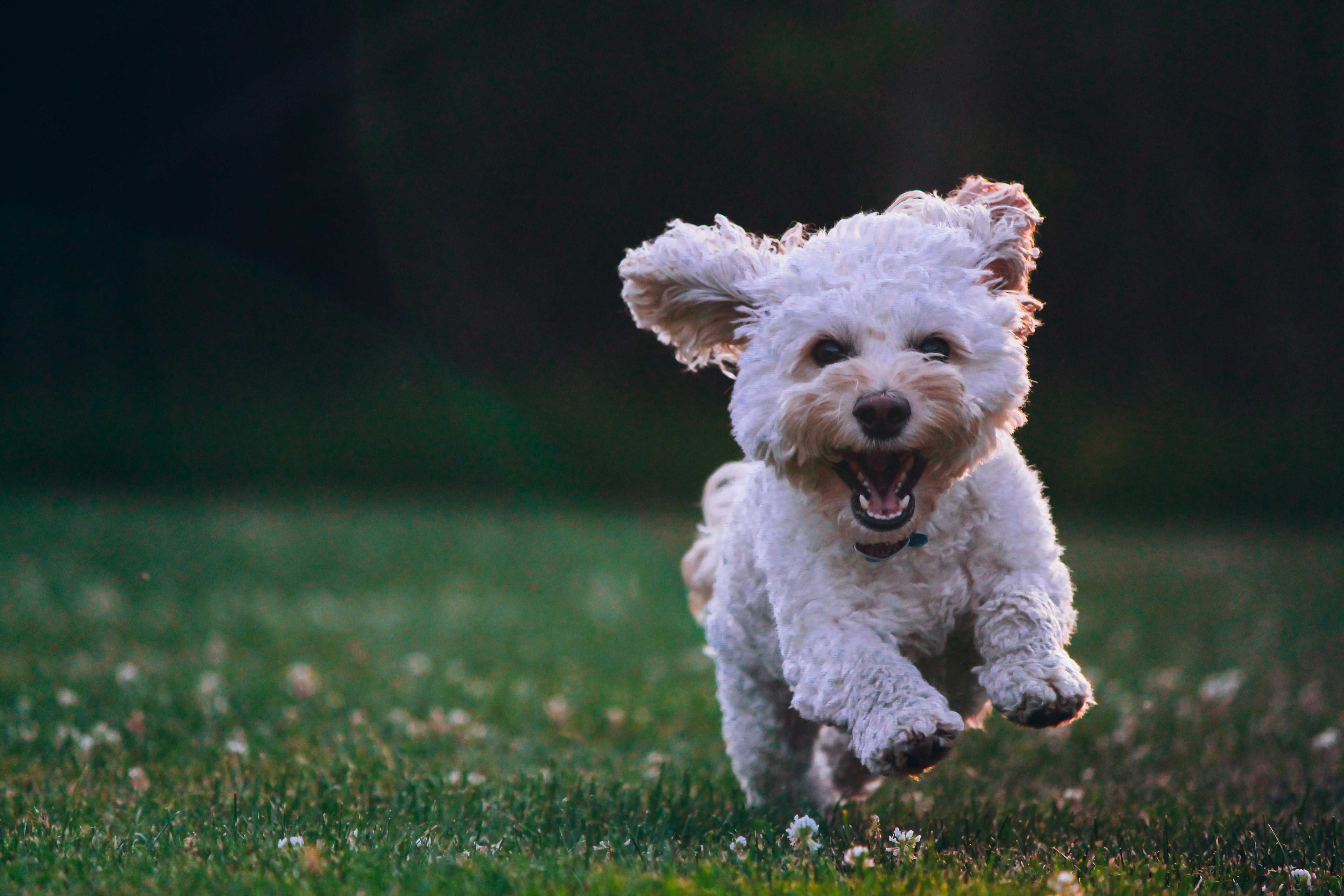
Unlock 10 Expert Puppy Training Tips!
Sign up with your email and receive a free video guide to transform your puppy into a well-behaved companion
It’s such an exciting time to be weeks away from bringing your puppy home.You might be scrolling through the breeder’s Facebook page for updates, sharing all the photos with your family and friends, brainstorming names, and buying all the cute toys.
Of course, you might also be feeling a little bit nervous. This might be your first puppy or your first puppy in years.
Don’t worry, I have your back.
In this guide, I am going to walk you through all of the preparations you should make before picking up your newest family member.
Ready? Let’s go.
Be Honest with Your Breeder
Good breeders like to make good matches between their puppies and the people who want them. They can only do that if you honestly tell them what your lifestyle is. Answer their questions based on the realities of your life. (Now is not the time to be aspirational.)
For example, many people say that they want an adventurous, high-energy dog, but that is a lot to take on. That means you will have to spend upwards of an hour exercising your dog every single day once they are out of puppyhood. That does not include other enrichment that you will have to provide your dog. This may be tricky to achieve if you work long hours.
On the flip side, maybe you plan to do dog sports. If that’s the case, a high-energy pup may be just the ticket.
Take Time Off

Puppies take a lot of time and energy. That might go without saying, but nearly every new puppy parent I have worked with wasn’t mentally prepared for just how difficult those first few weeks and even months can be. Potty training alone is guaranteed to disrupt your sleep.
That’s why it’s important to set aside time for your puppy. Try and take time off of work—I recommend at least a few days, but a full week is better—to help you and your puppy settle in. Make sure you set all this up with your job ahead of time. This is true even if you work from home. Those first few days are a lot and trying to work while adjusting to your puppy is setting yourself up for frustration and overwhelm.
If you are unable to take time off then enlist family or friends to help care for your puppy, including letting them out for all of the bathroom breaks they will need.
Learn Dog Body Language
This is a skill that everyone with a dog needs to have. Since dogs cannot speak, their body language is the only way they can communicate with us. Learning to understand what they are saying can help you train and socialize them more effectively, bond with them, and keep them—and others—safe. This is a big topic, so I’m not going to go into it here, but I recommend reading my blog post on Dog Body Language. You can also read books like Lili Chin’s Doggy Language.
Figure out Veterinary Care
Take the time now to find a veterinarian near you who you like. (There are veterinarians that are Fear Free Certified, if you’re interested.) Schedule your first check-up and ask about happy visits in which you stop by for the sole purpose of helping your puppy learn to like going to the vet office. Now is also the time to educate yourself on the puppy vaccination schedule and preventive care.
On the topic of health, you should also familiarize yourself with foods and plants that are toxic to dogs, so you can ensure you don’t accidentally harm your puppy.
Decide How You Want to Navigate Training
While it can be beneficial to wait to meet your puppy to decide what exactly to train and in what order, deciding how you want to train is an important decision to make before you bring your puppy home. So, let’s talk about it.
Training Style

I have heard from multiple new puppy owners how overwhelmed they feel in regards to training their puppy. There are multiple training styles out there and it can be difficult to decide which one to go with.
If you wait until after your puppy is home—when you are sleep deprived and annoyed by frustrating-yet-developmentally-normal puppy shenanigans—you might reach for training styles that promise fast results. Unfortunately, any one who guarantees anything when it comes to dog behavior probably doesn’t have a good understanding of dogs (at best) or is preying off of people’s desperation (at worst).
If you have a plan and an understanding of training theory prior to your little fur ball taking over your life then you are more likely to feel empowered instead of confused.
Here’s a quick rundown of training styles you might find out there:
Alpha / Dominance Theory: This theory postulates that dogs are pack animals with an alpha leader. These trainers say that in order for a dog to be well-behaved that you—their human—must take charge and be alpha. While popular, this theory has been debunked.
You should avoid trainers who train based on this theory because it’s wildly out-of-date. Clearly, they are not keeping up with the most up-to-date, scientific training methods.
Balanced Training: These trainers say that they work in all four quadrants of operant learning. They are:
- Positive reinforcement (a trainer gives a dog a treat when they do something good)
- Negative reinforcement (a trainer stands on the dog’s leash and only releases the pressure when the dog lies down)
- Positive punishment (a trainer squirts a dog with a water bottle)
- Negative punishment (a trainer turns their back on a dog who jumps on them, removing her attention.)
While this training style is backed by science—unlike dominance theory—and may sound good, there are a multitude of problems with it. Namely: studies have found a correlation between any of the punishment-based methods above with an increase in a dog’s anxiety, fear, and even aggressive behaviors.
Not to mention that it can decrease the dog-human bond, dogs tend to only respond to the person doling out the punishments, and the punishments have to keep increasing in intensity to keep working, leading trainers down a slippery slope. Remember, punishments only work if the dog finds them, well, punishing.
Anecdotally, I’ve also noticed that many balanced trainers do not understand the principles of positive reinforcement and, thus, explain it incorrectly, making people lean more heavily on the other three quadrants.
Food-Free Training: This style of training is similar to balanced training, only these trainers tend to ignore the positive reinforcement quadrant. Usually, these trainers misunderstand what positive reinforcement is (thinking of it like bribing). All of the same downsides of balanced training apply here.
Positive Reinforcement Training: This style of training is a quadrant in operant learning that postulates that all animals are likely to repeat behaviors that lead to enjoyable consequences. This means that you use reinforcers—things your dog intrinsically likes such as food, play, or access to the environment—to train them to behave according to your rules. The American Veterinary Society of Animal Behavior (AVSAB) recommends this style of training as it is as effective as punishment-based methods without the risk of bad side effects, such as an increase in aggressive behaviors.
Positive Reinforcement Trainers tend to have one or more of the following certifications: CPDT-KA, CDBC, KPA CTP, VSPDT, or Fear Free. Many of these websites allow you to search for trainers in their online directories.
Force / Fear Free Training: You may come across trainers who say they are force or fear free. There is a Fear Free Certification that trainers can obtain, so they may be specifically referring to that certification. This also means that trainers do not use the other three quadrants of operant learning and focus solely on positive reinforcement. They share all the upsides of positive reinforcement training.
This is just a small taste of common training styles. Please feel free to dive deeper by researching on your own.
Remember, the dog training industry in the United States is completely unregulated. Anybody can call themselves a dog trainer and make up any style of training. Be on the lookout for people practicing damaging training styles and avoid them. Sometimes, it can be difficult to understand how a trainer trains from their website. If that is the case, don’t be afraid to reach out and ask them.
If you are interested in taking your dog to a training class or working with a private trainer, I suggest having them picked out before you bring your puppy home.
Puppy Class or No Puppy Class?
It can be extremely beneficial to take your young puppy to a puppy class. Dogs have a socialization window between 8 and 12 weeks that allows them to process stimuli without much of a fear response. That means you should positively socialize them during this time (more on this in the socialization section.) A great opportunity for socialization is a puppy class.
That said, there is a risk of taking a puppy to a class when they are not fully vaccinated. This is a choice you have to make yourself. You can read the position of the American Veterinary Society of Animal Behavior here, which suggests taking your puppy to a puppy class seven days after their first set of vaccinations.
Note that puppy classes are primarily about socialization not training. I used to run a puppy class and people put expectations on it and their puppies that were not realistic. Your dog is not going to learn a minute-long stay or a perfect recall in a puppy class. They are going to learn how to interact with strangers, other dogs and puppies, various noises and objects. Training is mostly done at home and/or in future classes.
Of course, not every puppy class is created equal. Keep styles of training in mind (discussed above) when doing your research. Puppy classes do fill up, so if you find one that you like, go ahead and get registered for it before your puppy is home.
Decide on a Socialization Plan
A well-thought-out socialization plan plays a pivotal role in your puppy's development, turning them into well-adjusted, confident, and happy adult dog. It's about exposing them to a variety of people, environments, sounds, and other animals in a positive manner, ensuring they grow up to be sociable and comfortable in different situations. It’s about more than just making sure your dog can handle a visit to the vet or a walk in the park; it's about nurturing a robust, sociable demeanor that allows your dog to navigate the world confidently.
Studies indicate that the most important socialization period within a dog’s life is before they are three months old. Dogs who aren’t exposed to novel stimuli during this time risk developing behavioral problems, including fear, separation anxiety, hyper-excitability, destructive and unruly behavior, and the potential for aggression. Properly socialized puppies are also set up to meet their full potential in life.

So, what does socialization look like? Essentially, you want to positively and safely expose your dog to a variety of things: people, dogs, animals, sounds, environments, household objects, and more. This involves lots of treats, praise, and ensuring that each new experience is as enjoyable as possible for your puppy.
Whenever your puppy looks stressed or overwhelmed (hence why you need to know dog body language) that’s a sign to back off and take things a little slower. It’s better to have fewer positive experiences than numerous bad ones, as bad experiences can backfire and make your puppy fearful.
You can socialize your puppy through conscious outings (to the park, to a dog-friendly store, to a playground, to downtown), on neighborhood walks, at a puppy class, or by going to a friend or family member’s house. Bring treats and toys and use them liberally whenever your puppy is experiencing something new. Keep vaccination status in mind and don’t bring your puppy to a place other dogs frequent, such as dog parks.
That said, while you can brainstorm how you plan to socialize your puppy now, you may need to change it once they are home. Every puppy is different, and their socialization needs can vary. Some may require extra time to warm up to new experiences, while others may dive in with little hesitation. Tailoring your approach ensures that your puppy can gradually adjust to the world around them without feeling overwhelmed.
Prepare your Home
Puppies, much like toddlers, have a talent for finding trouble in the most unexpected places. Electrical cords? Delicious! Shoes? Even better! To keep your new puppy safe (and your belongings intact), you'll need to look at your home from a puppy's perspective. Get down to your puppy’s level and take note of anything within reach that could be chewed, swallowed, or otherwise destroyed.
Use protective covers for cords, secure cabinets and closets, and remove any small objects that could become choking hazards. Research your plants and remove toxic ones. You can use gates to block off areas of your home that aren’t safe for puppies or that you want to be a puppy-free zone.

Not only is this beneficial from a safety perspective, but it sets you up for future training success. If your puppy gets in the habit of doing “bad” behaviors such as chewing on things you don’t want them to, counter surfing, etc then it will be hard to break them of that habit. Instead, it’s better to ensure they don’t start that habit in the first place by using management.
Next up, create a cozy den. Puppies need a safe, comfortable space to call their own. Whether it's a crate outfitted with a soft bed and some toys or a gated area in a quiet corner of your house, having a designated "puppy zone" will provide your puppy with a sense of security. It's also a key step in house training and establishing routine. Just remember, this space should be inviting and safe, a place where they can retreat when they need a break from the hustle and bustle of their new world.
You will also want to ensure that any other pets you live with—including cats or other dogs— have their own safe space away from the new puppy.
Talk to Your Kids

Dogs and kids in a home together can be a wonderful thing. But dog bites do happen and they are more common than you might think. Luckily, they are mostly avoidable! If you are bringing a dog into your home, it’s important to have a conversation with your children about what it means to live with a dog. You should teach your kids about dog body language, discuss boundaries such as leaving a dog alone when they are eating and not taking away a dog’s toys, and the appropriate ways to engage with a dog. The best time to have these conversations is before your puppy comes home and while your puppy is little and not able to hurt your child.
I suggest going to Pooch Parenting. The founder, Michelle, is an expert on dogs and children and has lots of resources available for you.
Decide on Rules
Consistency is the key to training, so it’s a good idea to decide on your house rules before you bring your puppy into it. These decisions include things like whether or not the puppy will be allowed on the furniture, if there are certain rooms you do not want your puppy to be in (such as the kitchen), sleeping arrangements, training goals, and if it’s okay for your puppy to share your food sometimes. These are all personal decisions (although, if you do share food with your puppy it’s important to know what foods are toxic to dogs).
It can be quite confusing for a puppy if rules are not always consistent. For example, if one member of your household allows the puppy to jump on the couch, but another doesn’t then your puppy won’t know what’s expected of them. This can lead to feelings of frustration for both the human and dog.
Remember, your puppy won’t always be small. Keep that in mind when you make these rules.
Prepare Yourself Mentally

I’ve spoken with numerous new puppy parents who feel exhausted, overwhelmed, and maybe a teensy bit regretful in those first few weeks or months. That’s normal. Puppies are cute, but chaotic. You might be running on less sleep than typical and your patience will be tested.
It’s a good idea to make sure you are in a good mental place when you bring your puppy home. How you get there depends on you—perhaps you meditate, exercise, eat healthy, and/or prepare your support network.
It can also be helpful to understand why your puppy does what they do. Read a book: Wag by Zazie Todd, Canine Enrichment for the Real World by Allie Bender and Emily Strong, Puppy Start Right by Kenneth and Debbie Martin, or Control Unleashed: The Puppy Program by Leslie McDevitt to name a few. These books help contextualize your puppy’s frustrating behaviors, which can help alleviate stress.
I have seen the relief on my client’s faces when I tell them that puppy biting is not only normal, but a sign of a well-socialized pup. Or that jumping is a normal greeting behavior for dogs because puppies learn to solicit attention from their mothers by jumping and licking their mother’s muzzle. When you know why puppies are behaving the way they are—as opposed to thinking they’re trying to be alpha or otherwise be as annoying as possible—it can help you be a little less frustrated with them.
Buy (Most of) What You Need
It can be helpful to wait on some purchases until you get to know your dog’s personality, but it’s nice to have most of what you need good to go. Check out my New Puppy Parent Checklist, which has a downloadable PDF you can take to the pet store with you.
Preparing for a New Puppy Checklist
To review, here’s a checklist of what you should do to prepare for your newest family member.
- Be honest with your breeder
- Take time off work
- Learn how to read dog body language
- Find a veterinarian
- Decide on your training philosophy, whether or not you want to participate in a puppy class, and find a qualified, certified trained (if desired)
- Decide your socialization plan
- Puppy-proof your home and create a safe space for your new puppy and animals you already have
- Talk to your kids about how to properly engage with a puppy
- Make house rules
- Mentally prepare yourself
- Buy what you need
Conclusion
With a little preparation, you can focus on what really matters: bonding with your new best friend. So, take a deep breath, and get ready for the adventure of a lifetime. Puppies grow up fast, so cherish these early days of discovery and joy.
Welcome to the wonderful world of puppy parenthood!

